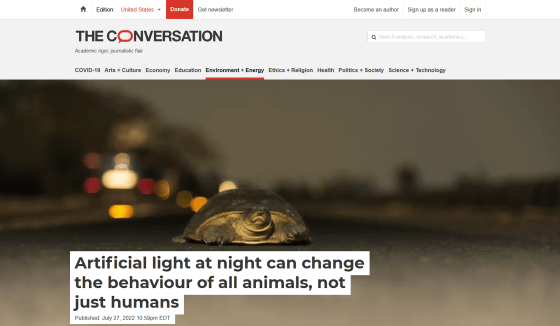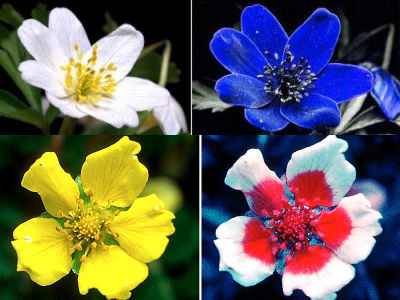What is the adverse effect of human-generated `` night light '' on animals?

Humans install lights in various places, from urban buildings to suburban roads, to create bright and safe living spaces even at night. However, ``artificial night light'' produced by humans has an adverse effect on various behaviors of animals, said
Artificial light at night can change the behavior of all animals, not just humans
https://theconversation.com/artificial-light-at-night-can-change-the-behaviour-of-all-animals-not-just-humans-183028

It is estimated that the intensity and reach of human-generated nighttime light is increasing at a rate of around 2-6% per year, making it one of the fastest growing pollutants in the world. It's happening,' Jones points out. Many organisms have established a life cycle that responds to light such as the sun and moon. It will affect various things.
For example, baby sea turtles that have just hatched from their eggs head for the sea, relying on the moonlight reflected on the sea, but if there are streetlights along the beach, they may be attracted by the light and head inland. . As a result, it seems that you may be hit by a car or fall into a swimming pool and drown. In addition, moths and other phototactic insects can lose their sense of direction and keep hitting streetlights endlessly, and the light emitted by female fireflies to attract males can get lost in the streetlights, preventing them from successfully mating. Yes, says Jones.
Other studies have reported that millions of birds are trapped in city lights each year, causing some harm or death. In addition, for light-avoiding bats and some small mammals, the environment within reach of human light is no longer a habitat. In this case, the increase in streetlights can be said to be a form of habitat destruction.
On the other hand, nocturnal light causes prolongation of foraging behavior for animals that normally forage only during the day. Although this has the advantage of increasing the amount of food that can be captured, research results using insects and spiders have also reported that nighttime light reduces immune function and adversely affects growth, development, and reproduction. I'm here.

In recent years, the harmful effects of light on humans have become widely known, and efforts are being made to reduce the effects on animals. In Florida, USA, the color of streetlights near beaches in urban areas has been changed to amber, which has less impact on animals, and
In addition to adopting amber lights on Phillip Island in Victoria, Australia, where short- billed shearwaters , one of the migratory birds that migrate the longest distances, stop by, there is also an attempt to turn off lights along the migration route during the migration period. It is done. Jones and colleagues argue that these strategies have reduced the impact of night lighting on animals and saved the lives of countless animals.
In addition, Jones et al. say that the following actions will reduce the impact on animals.
Dim the default brightness to illuminate only specific areas that really need lighting.
- Use sensors and dimmers to adjust the timing and brightness of lights.
・Install the lighting as close to the ground as possible, and install a shield on the back so that the light does not reach unnecessary areas.
・Wildlife is sensitive to light with long wavelengths, such as blue, violet, and ultraviolet light, so choose light that has less impact on wildlife, such as red, orange, and amber.
・Finish the outer wall of the building with low-reflection materials as much as possible to prevent irregular reflection of lighting.
Jones et al. point out that while light harm can be reduced simply by turning off lights, the benefits to human work, leisure and entertainment are so great that it is difficult to actually turn them off. . Instead, he argued, the amount of lighting could be reduced and the colors could be changed to make the animals less likely to be devastated.

Related Posts:







